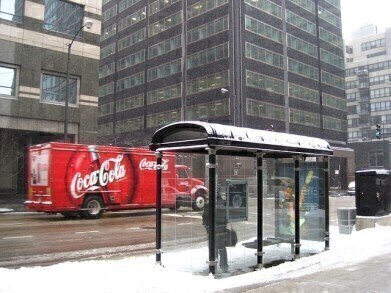Water/Wastewater
What Part Does Coca-Cola Play in Plastic Pollution?
Oct 20 2017
Coca-Cola is the biggest selling soft drink across the globe – and arguably the most famous drinks brand in the world too. As well as the diet, zero and other versions of its namesake drink, the company owns the likes of Fanta, Sprite and Minute Maid, making billions each year from their sale. But with this global domination comes a big responsibility environmentally. Read on to see how Coca-Cola performs when it comes to plastic pollution.
Buy the world a Coke
Known to many simply as Coke, Coca-Cola have always tried to promote ideas of environmentalism and peace – not least in their 1970s Hilltop advert, which is still one of the most memorable TV adverts of all time. The song – sung by a diverse group in a green hilltop setting – includes lyrics such as “I’d like to buy the world a home / And furnish it with love / Grow apple trees and honey bees / And snow white turtle doves”.
In some ways, Coke is living up to this reputation. They prioritise water stewardship, ensuring the water supplies they use are sustainable and protected for the future. They also aim to treat their wastewater efficiently. This is a growing trend, with innovations allowing more companies to improve their wastewater treatment processes – and some even converting wastewater into energy. One area where Coca-Cola is not taking responsibility, however, is plastic pollution.
Churning out plastic
New analysis suggests that Coca-Cola is continuing to increase it’s the amount of single-use plastic bottles it produces. It has now reached an astounding 110 billion bottles each year, according to Greenpeace. And, while the company highlights “collection, recovery and recycling” as “key focus areas” on their site’s environment page, they’re clearly not doing enough.
Less than fifty percent of plastic bottles end up being recycled, with fewer than 1 in 10 of recycled bottles being turned into new bottles. As a result, a scary number of bottles are still making their way into our oceans. Millions of tonnes of plastic is entering the ocean, with estimates suggesting it will eventually outweigh fish.
The problem with plastic pollution
As well as looking terrible, plastic in the oceans is killing thousands of animals, either causing suffocation or being ingested. Around 9 in 10 seabirds have ingested plastic and Greenpeace produced a 2.5 tonne sculpture to emphasise this.
Their sculpture, depicting seabirds vomiting plastic beside a typical “family beach scene”, was delivered to Coca-Cola’s London Headquarters. Coca-Cola has since announced an increase in its recycling target, aiming to use 50% recycled plastic in its bottles by 2020 – up from a previous goal of 40%. Currently, however, it’s estimated they use just 7% on average.
Events
May 05 2024 Seville, Spain
May 13 2024 Munich, Germany
May 23 2024 Beijing, China
May 23 2024 Beijing, China
Jun 10 2024 Algiers, Algeria













